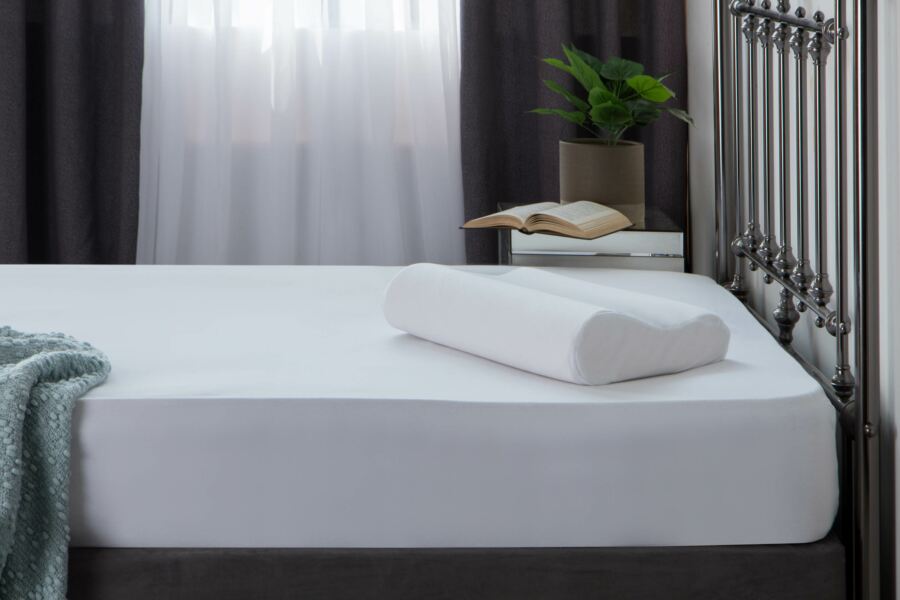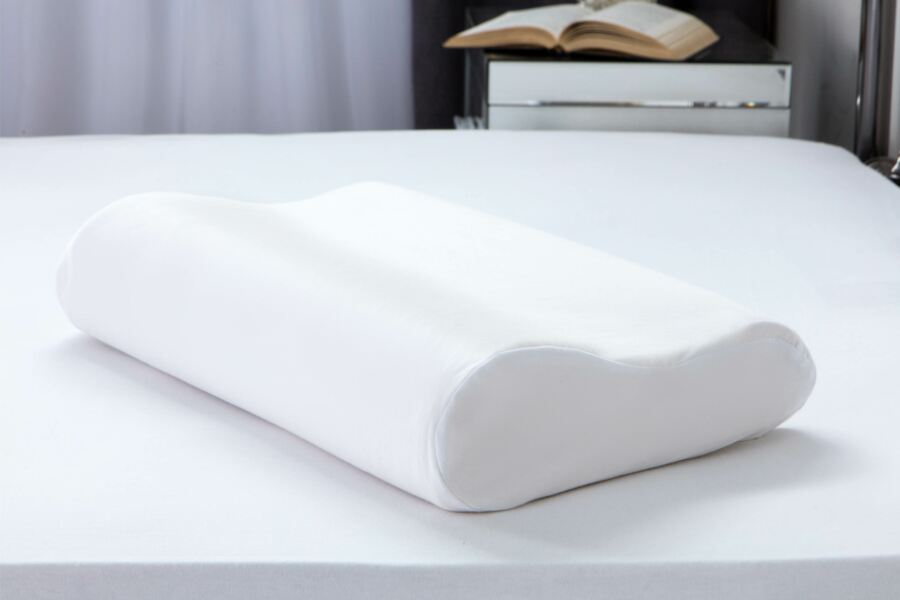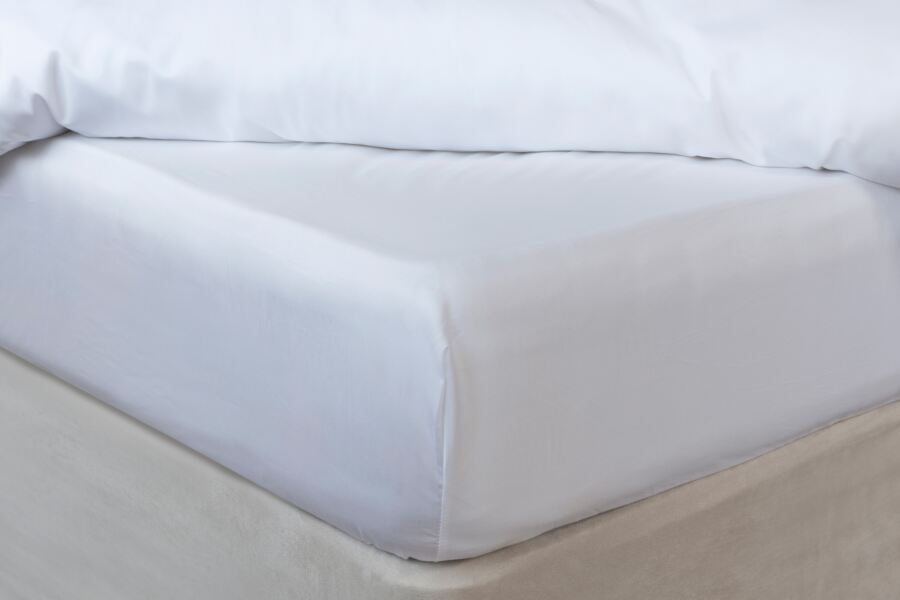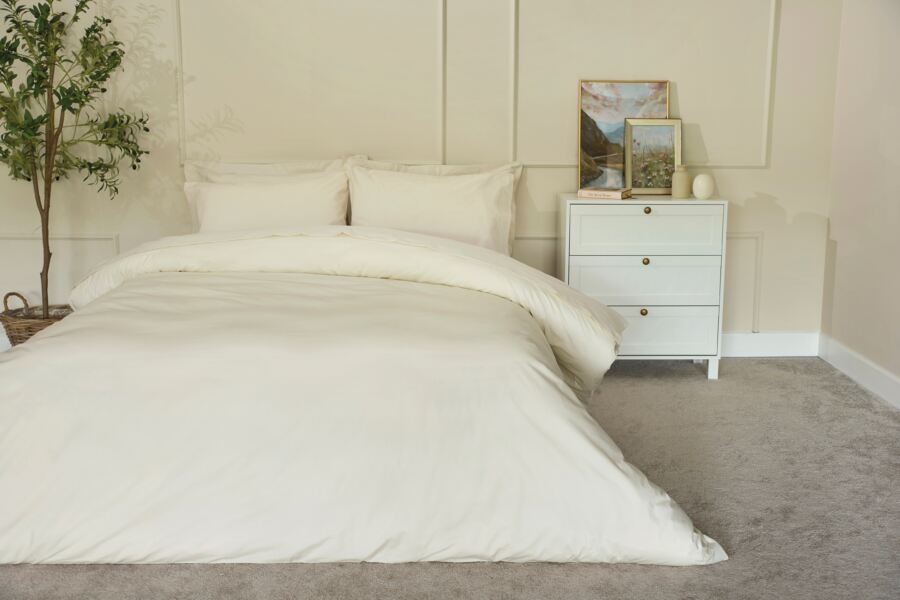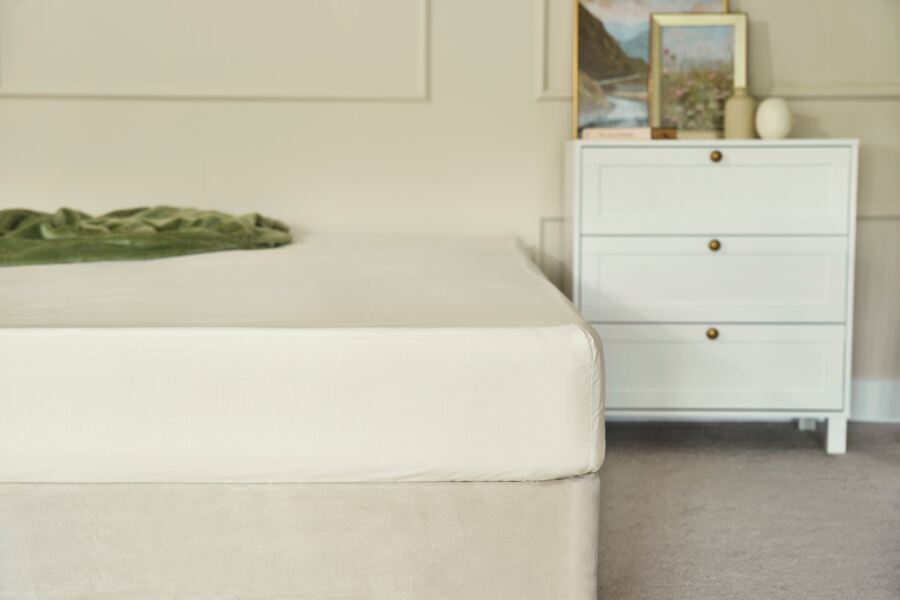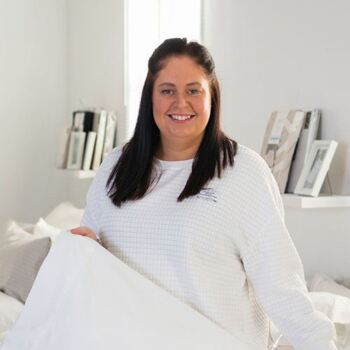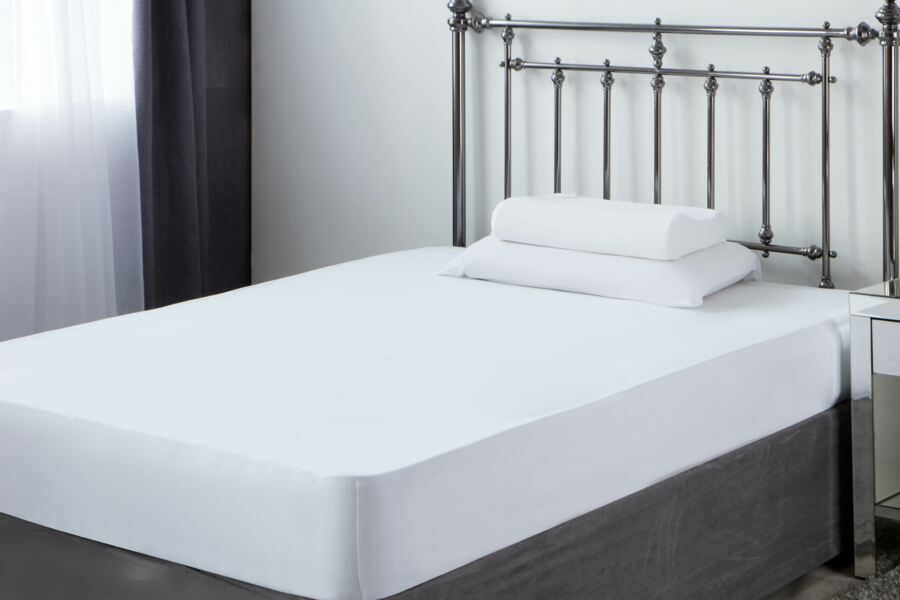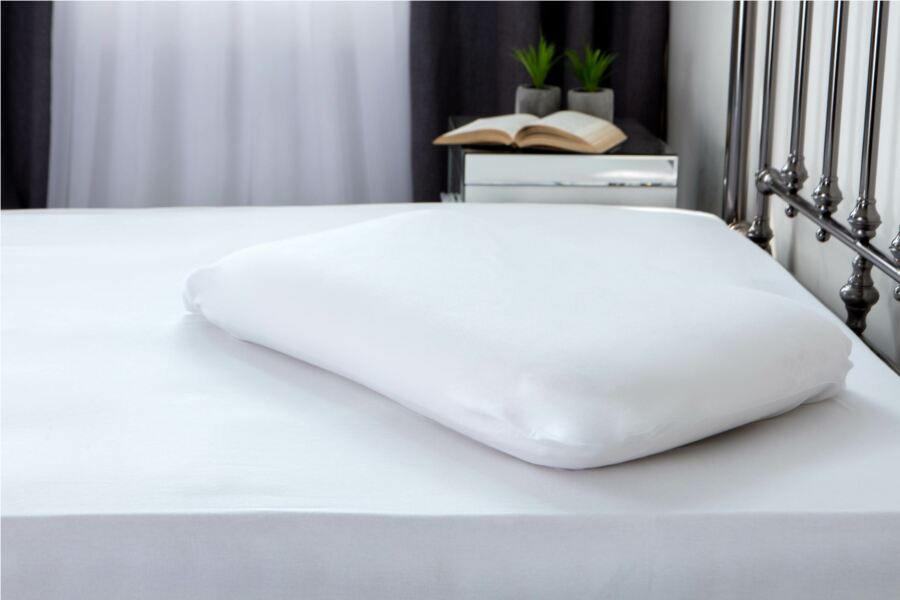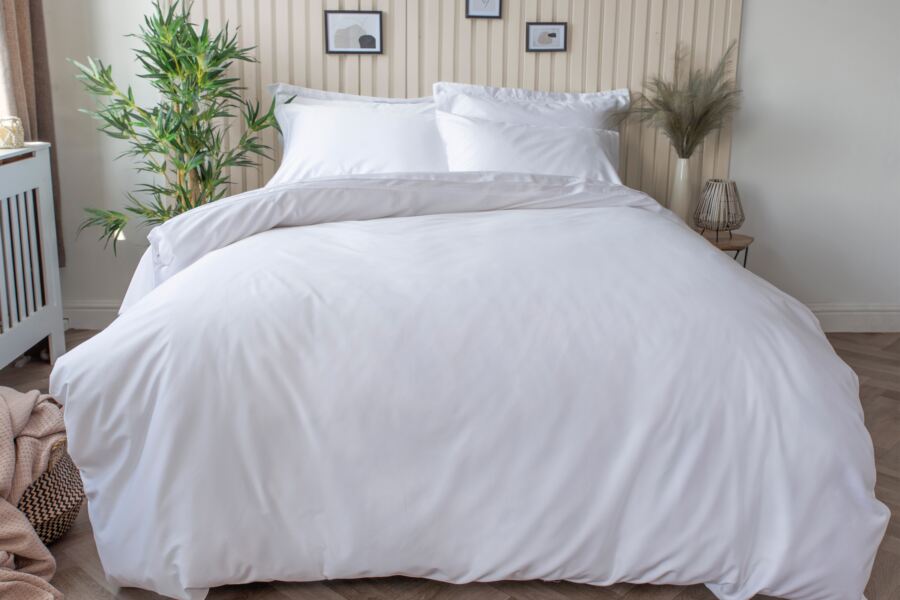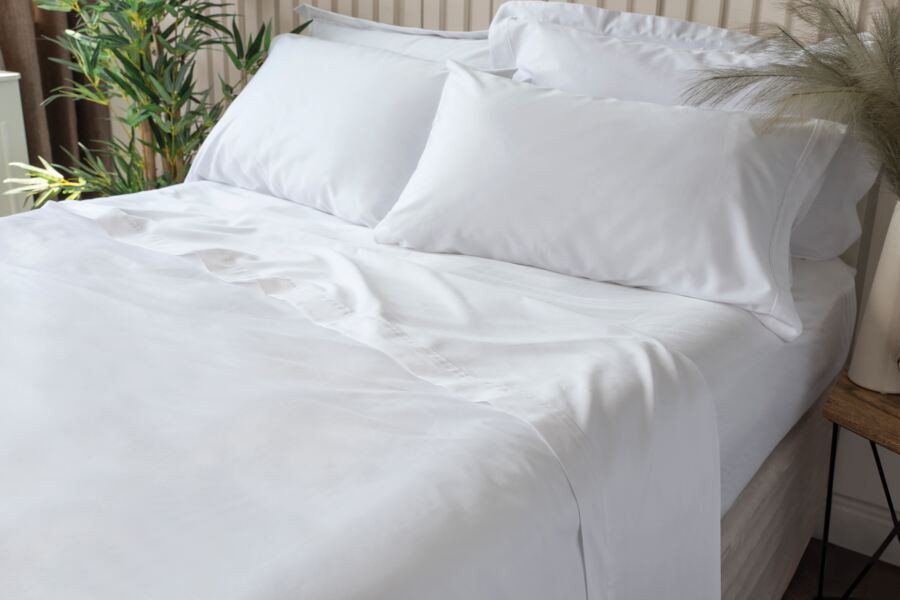Table of Contents
- Best Cheap Bed Linen: Top Materials
- Factors to Consider When Buying Cheap Bed Linen
- Other Ways to Save Money on Bedding
- FAQs
Finding good bed linen on a budget doesn't mean you have to put up with rough fabrics or boring designs.
There are loads of affordable options available today that feel soft, last well, and look great in your bedroom. You just need to know which fabrics perform well over time and which features actually matter for a good night's sleep.
This guide covers the bed linen materials that offer excellent value for money. We'll look at what makes bedding comfortable and long-lasting, plus share some practical tips to help you make the most of your purchase.
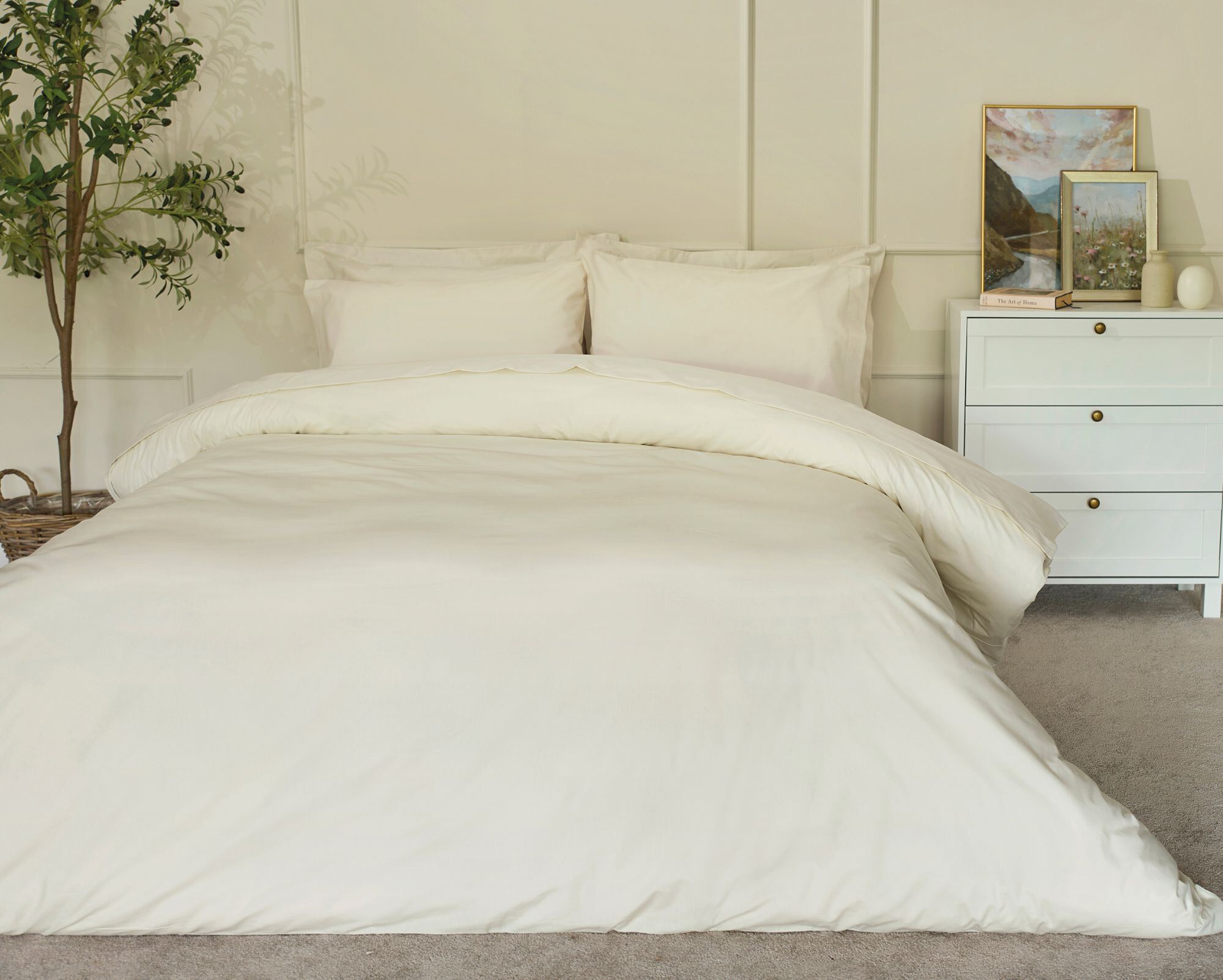
Best Cheap Bed Linen: Top Materials
Here are the top budget-friendly fabrics that don’t skimp on comfort or durability.
Cotton percale
If you're looking for cotton bedding, percale is one of the most affordable and practical options. The tight weave offers that iconic "crisp cotton" feel, making it ideal for "hot sleepers". Percale is durable, easy to care for, and breathable thanks to its matte finish.
The material gets softer with each wash, so don't worry if it feels a bit stiff when you first buy it. Just keep in mind that percale wrinkles quite easily, so you might need to do a bit of ironing if you like your bed looking perfectly smooth.
Polycotton
Polycotton is a blend of cotton and polyester, designed to combine comfort with durability. It’s crease-free and quick to dry, making it a practical and convenient option for busy households. Plus, polycotton is typically significantly cheaper than 100% cotton or organic cotton bedding.
The polyester content makes these sheets less breathable, and they are prone to pilling over time. However, polycotton is still a great option for everyday use thanks to its value for money and minimal fuss.
Microfibre
Microfibre sheets are made from finely woven synthetic fibers, giving them a silky, lightweight feel. They’re budget-friendly, stain-resistant, and surprisingly durable and comfortable considering their low price point.
Microfibre also holds colour well, so your bedding won’t fade easily, even if your bed receives direct sunlight. This makes them a great choice if you're looking for bright, bold bedding. The only drawback? This material can trap heat, so it may not be the best choice if you run hot when sleeping.
Jersey cotton
Jersey cotton feels more like wearing a comfortable t-shirt than sleeping on traditional sheets. The stretchy, knitted fabric is cosy, warm, and doesn't wrinkle much, making it a great low-maintenance option.
Another benefit is that it contours to the body shape, offering optimised sleep quality. While jersey isn’t as crisp as percale, it’s a great pick for cooler months and chilly nights. If you prefer bedding with a more relaxed feel, jersey cotton could be ideal for you.
Bamboo
Bamboo bedding has become a firm favourite among eco-conscious buyers thanks to its natural temperature-regulating properties, which offer year-round comfort. While high-end bamboo sheets can be pricey, budget-friendly blends still offer softness and moisture-wicking benefits.
Bamboo is also naturally hypoallergenic, making it a smart choice for those with allergies and sensitive skin. Whether you prefer to machine wash, hand wash, line dry, or tumble dry, bamboo is practical and easy to look after.
Factors to Consider When Buying Cheap Bed Linen
To get the best bedding for your budget, focus on these key factors:
-
Fabric content: Always check the label to know exactly what you’re buying. Pure cotton feels completely different from polycotton, and microfibre isn't as soft as bamboo. Doing a bit of homework beforehand really pays off.
-
Weave: Percale (crisp and cool) and sateen (smooth and slightly shiny) are the most common weaves, though there are other options available. For affordable bedding, percale usually offers the best durability.
-
The right fit: Check that the sheets match your mattress size and depth properly. Sheets that don't fit well wear out faster and feel uncomfortable to sleep on. When buying fitted sheets, measure your mattress depth to see if you need extra-deep pockets.
-
Thread count: Thread count refers to the number of threads woven into a square inch of fabric. Be cautious of marketing ploys and understand that higher thread counts don’t always indicate better quality. Anything between 200 and 400 is usually soft, durable, and affordable.
-
Brand: Well-known brands often have better quality control, even with their cheaper ranges. Spend some time reading online reviews and asking for recommendations before picking a bedding brand. Belledorm offers an excellent selection of quality bedding at reasonable prices.
-
Certifications: Official labels tell you about quality, materials, and ethical production methods. Look for Oeko-Tex or similar certifications to make sure your bedding doesn't contain harmful chemicals.
Other Ways to Save Money on Bedding
If you're on a budget, there are plenty of ways to stretch your money further without compromising on comfort.
Extend the lifespan of your bedding
The longer your bedding lasts, the lower your "cost-per-use" will be. To extend the lifespan of your bedding, follow these tips:
-
Wash bedding according to the manufacturer's washing instructions.
-
Wash sheets, pillowcases, and duvet covers regularly to remove sweat and allergens.
-
Use a mild washing detergent and a laundry bag to protect your bedding when washing it.
-
Use a mattress protector to create a barrier between your sheets and your mattress.
-
Have two or three sets of bedding so you can rotate them, giving each bedding set a rest between uses.
-
Get rid of any spots or stains as soon as possible to prevent them from settling into the fabric.
-
Store your bedding in a cool, dry space with ventilation when not in use.
-
Don't let your pets sleep on your bed, as their hair and claws can cause damage over time.
Buy bedding sets
Bundled sheet-and-pillowcase sets usually cost less than buying everything separately. Matching sets typically contain a duvet cover, two pillowcases, and a fitted sheet. You can usually find these in lots of different sizes, patterns, and designs.
However, if you don't need all the items that come in a bedding set, mix and match to suit your particular needs. This way, you can refresh your bedding’s appearance without replacing everything at once.
Keep an eye out for sales and special offers
End-of-season sales, clearance outlets, and online deals can help you snag quality bedding at a fraction of the price. Set price-drop alerts for your favourite bedding stores and check their sale page regularly. You never know what you could find for a bargain.
Prioritise what you use most
If you’re working with a tight budget, focus on investing in the pieces you’ll use every night (like fitted sheets and pillowcases) before splurging on extras such as bed runners or decorative cushions. Spending sensibly on items that directly affect how comfortable you feel gives you the best value for money, while leaving room to add nice-to-have accessories later when you can afford them.
FAQs
Why is synthetic bed linen more affordable than natural options?
Synthetic bedding (such as polyester) costs less because it's made from cheaper raw materials. This type of fabric is also usually mass-produced, which means it needs less labour and fewer resources to make.
What kind of bed linen do 5-star hotels use?
Five-star hotels usually provide their guests with Egyptian cotton sheets with high thread counts, sourced from luxury bedding brands. Other popular materials include silk and satin. Duvets are typically made from natural materials, such as down (duck feathers) or cotton.
What should I avoid when buying bed sheets?
Here are a few things to avoid when buying bed sheets:
-
Not considering your specific needs. For example, "hot sleepers" should look for sheets with breathability, while those with allergies should go for hypoallergenic options.
-
Focusing too heavily on thread count. While thread count can indicate softness, it's not always a quality guarantee. There are plenty of other factors to consider.
-
Not reading the fine print. Make sure you read the fabric details. Otherwise, you could very easily end up with a cotton blend when you thought you were buying 100% cotton bedding.
What thread count is best for bed linen?
For most people, the ideal thread count falls somewhere between 200-400. This range gives you the best balance of softness and durability. Thread counts above 600 can feel heavy and don't breathe well, while anything below 200 tends to feel rough against your skin.
Are linen sheets worth the cost?
Linen sheets and duvet covers do cost quite a bit upfront. However, most people think the expense is justified because linen is so durable, long-lasting, and comfortable to sleep on. Good quality linen bedding should serve you well for many years.

